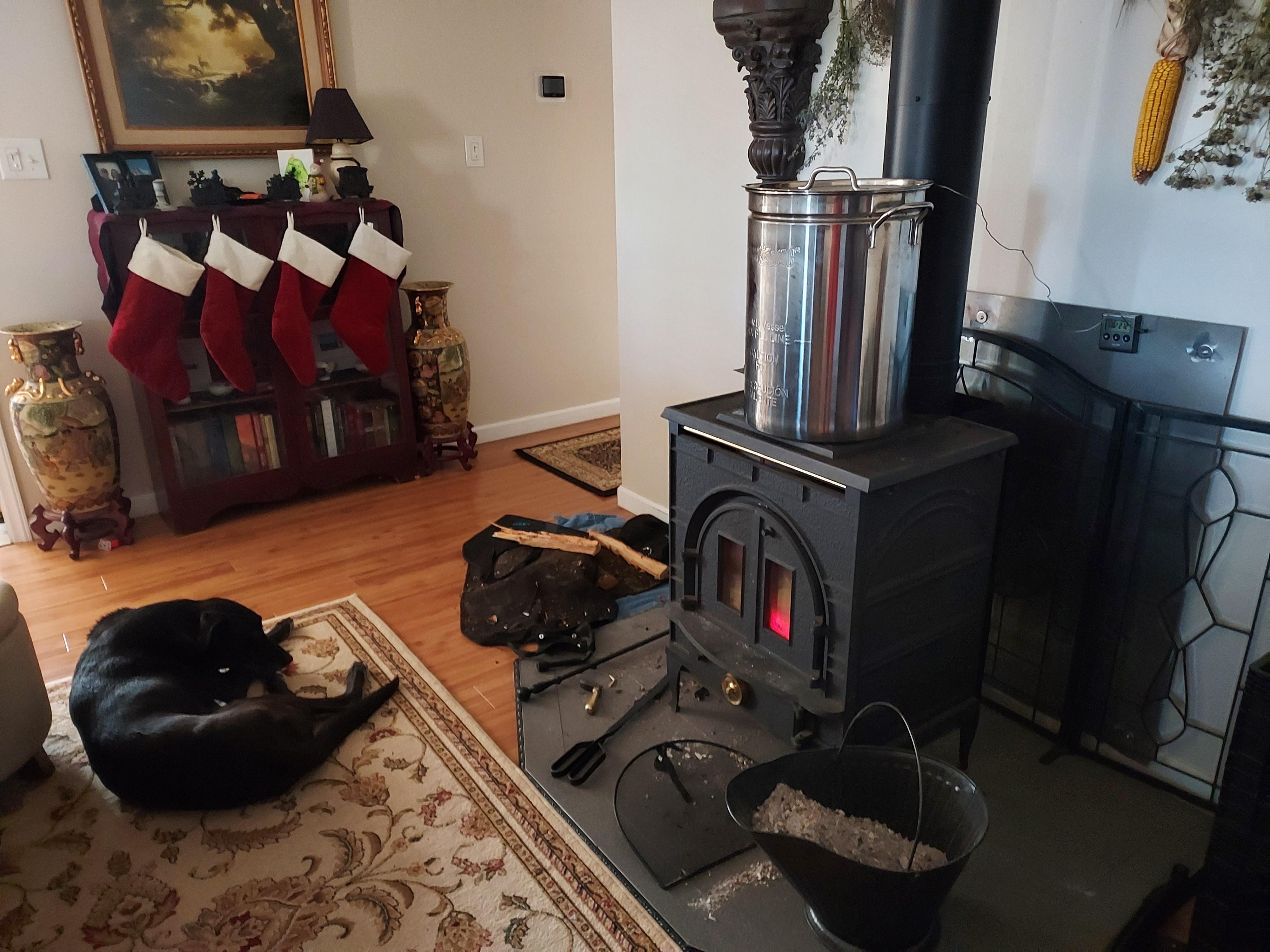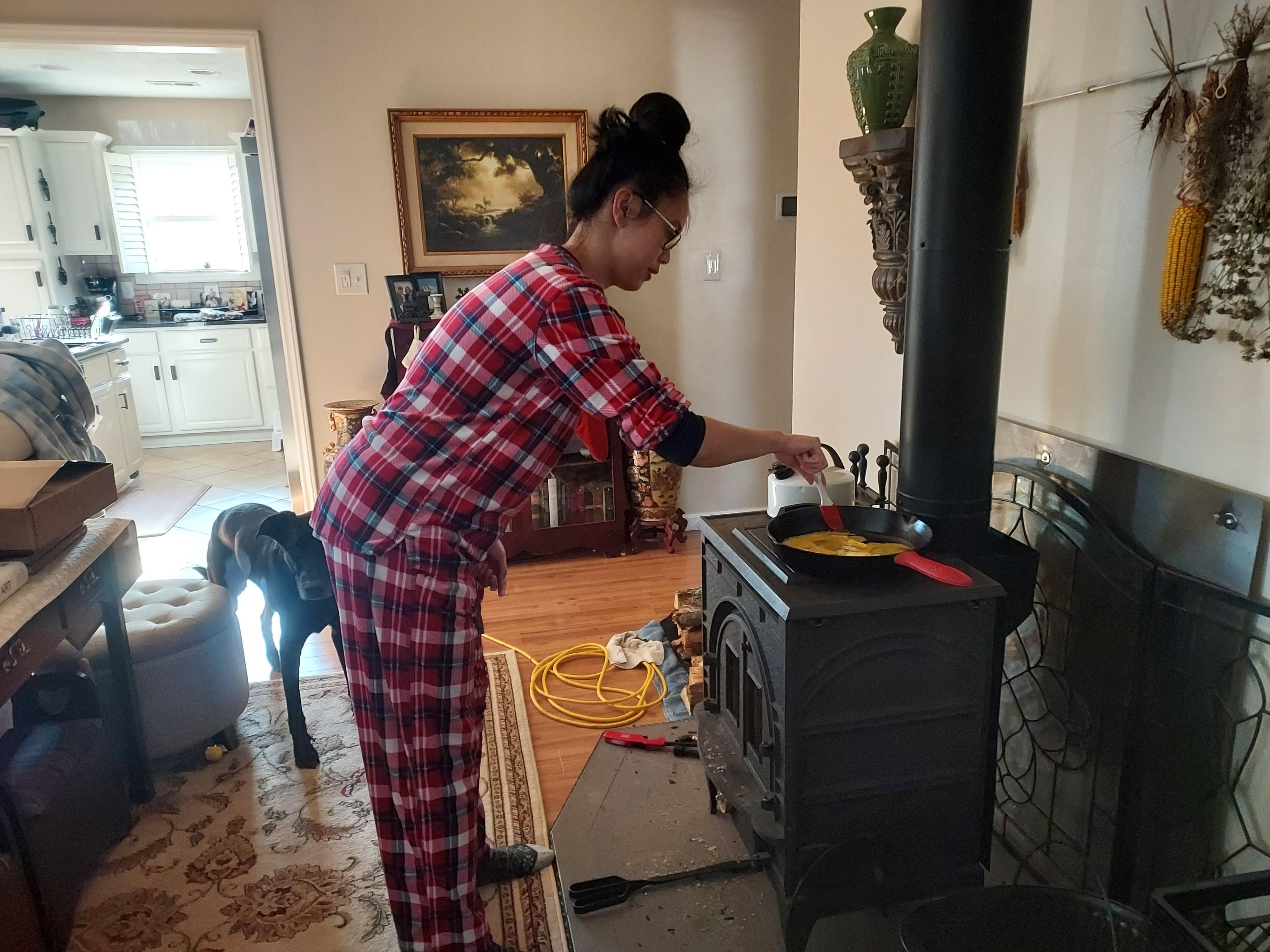I did a search for about 30 minutes and couldn't find anything specific to these stoves.
We were one of the places located by power outages this week. Out of power for 4 days, and the temp dropped into the negatives which is VERY rare for us. The stove did GREAT and I'd guess the house never got below 65 degrees. I was having to wake up every 3-4 hours to reload the stove. I just want to make sure I'm not missing anything here.
I'm still running on the old catalytic combustor from when I rebuilt it. I was burning green wood last year so didn't want to destroy a new Condar steel cat yet. This year I'm burning better seasoned wood, but I still let it burn for 5 minutes with the bypass open to let it cook off excess moisture before closing the bypass for cat mode.
I'm running the main air valve completely closed once it gets into the high temperatures during the cat burn, and running the cat air intake at about 1.25 turns or 1.5 turns, but that's only lasting 3-4 hours before it drops out of the catalytic temperature and the stove is ready to be reloaded. I fully load it. It doesn't seem to matter whether I use oak, ash, or pine. Long term, I'd like to get away from using ANY pine, but right now it's in the mix because of all of the trash trees slowly falling and making way for better hardwoods.
I installed this stove last year expecting more inflation, and we have LOVED it. The dog has decided it's the best place to be, of course. During the power outage it didn't only heat the house completely on its own, but it also served as a place to cook food and I used a turkey fryer pot to heat up water for a bath. We were so happy to be ready. Many of our neighbors had to drain pipes and abandon their homes.
Merry Christmas everyone!


We were one of the places located by power outages this week. Out of power for 4 days, and the temp dropped into the negatives which is VERY rare for us. The stove did GREAT and I'd guess the house never got below 65 degrees. I was having to wake up every 3-4 hours to reload the stove. I just want to make sure I'm not missing anything here.
I'm still running on the old catalytic combustor from when I rebuilt it. I was burning green wood last year so didn't want to destroy a new Condar steel cat yet. This year I'm burning better seasoned wood, but I still let it burn for 5 minutes with the bypass open to let it cook off excess moisture before closing the bypass for cat mode.
I'm running the main air valve completely closed once it gets into the high temperatures during the cat burn, and running the cat air intake at about 1.25 turns or 1.5 turns, but that's only lasting 3-4 hours before it drops out of the catalytic temperature and the stove is ready to be reloaded. I fully load it. It doesn't seem to matter whether I use oak, ash, or pine. Long term, I'd like to get away from using ANY pine, but right now it's in the mix because of all of the trash trees slowly falling and making way for better hardwoods.
I installed this stove last year expecting more inflation, and we have LOVED it. The dog has decided it's the best place to be, of course. During the power outage it didn't only heat the house completely on its own, but it also served as a place to cook food and I used a turkey fryer pot to heat up water for a bath. We were so happy to be ready. Many of our neighbors had to drain pipes and abandon their homes.
Merry Christmas everyone!



